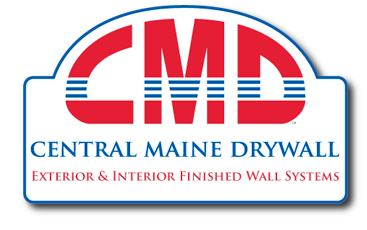What Are Drywall Finishing Level Definitions??
October 19, 2015 in Uncategorized
The following finishing level definitions are based on ASTM C840, “Standard Specification for Application and Finishing of Gypsum Board” and are intended to provide an industry standard for drywall finishing.
Level 0 Used in temporary construction or wherever the final decoration has not been determined. Unfinished. No taping, finishing or corner beads are required. Also could be used where non-predecorated panels will be used in demountable-type partitions which are to be painted as a final finish.
Level 1 Frequently used in plenum areas above ceilings, in attics, in areas where the assembly would generally be concealed or in building service corridors and other areas not normally open to public view. Some degree of sound and smoke control is provided; in some geographic areas, this level is referred to as “fire-taping,” although this level of finish does not typically meet fire-resistant assembly requirements. Where a fire resistance rating is required for the gypsum board assembly, details of construction should be in accordance with reports of fire tests of assemblies that have met the requirements of the fire rating imposed. All joints and interior angles shall have tape embedded in joint compound. Accessories are optional at specifier discretion in corridors and other areas with pedestrian traffic. Tape and fastener heads need not be covered with joint compound. Surface shall be free of excess joint compound. Tool marks and ridges are acceptable.
Level 2 May be used with setting-type compound for areas where water-resistant gypsum backing board, specification ASTM C630, is used as a substrate for tile. It may also be specified for standard gypsum board surfaces in garages, warehouse storage or other similar areas where surface appearance is not of primary importance. All joints and interior angles shall have tape embedded in joint compound and shall be immediately wiped with a joint knife or trowel, leaving a thin coating of joint compound over all joints and interior angles. Fastener heads and accessories shall be covered with a coat of joint compound. Surface shall be free of excess joint compound. Tool marks and ridges are acceptable.
Level 3 Typically used in areas which are to receive heavy texture (spray or hand applied) finishes before final painting, or where commercial-grade (heavy duty) wallcoverings are to be applied as the final decoration. This level of finish should not be used where smooth painted surfaces or where lighter weight wallcoverings are specified. The prepared surface shall be coated with a drywall primer prior to the application of final finishes. All joints and interior angles shall have tape embedded in joint compound and shall be immediately wiped with a joint knife or trowel, leaving a thin coating of joint compound over all joints and interior angles. One additional coat of joint compound shall be applied over all joints and interior angles. Fastener heads and accessories shall be covered with two separate coats of joint compound. All joint compounds shall be smooth and free of tool marks and ridges. The prepared surface shall be covered with a drywall primer prior to the application of the final decoration.
Level 4 This level should be used where residential grade (light duty) wall coverings, flat paints or light textures are to be applied. The prepared surface shall be coated with a drywall primer prior to the application of final finishes. Release agents for wall coverings are specifically formulated to minimize damage if coverings are subsequently removed. The weight, texture and sheen level of the wallcovering material selected should be taken into consideration when specifying wallcoverings over this level of drywall treatment. Joints and fasteners must be sufficiently concealed if the wallcovering material is lightweight, contains limited pattern, has a glossy finish or has any combination of these features. In critical lighting areas, flat paints applied over light textures tend to reduce joint photographing. Gloss, semigloss and enamel paints are not recommended over this level of finish. All joints and interior angles shall have tape embedded in joint compound and shall be immediately wiped with a joint knife or trowel, leaving a thin coating of joint compound over all joints and interior angles. In addition, two separate coats of joint compound shall be applied over all flat joints and one separate coat of joint compound applied over interior angles. Fastener heads and accessories shall be covered with three separate coats of joint compound. All joint compounds shall be smooth and free of tool marks and ridges. The prepared surface shall be covered with a drywall primer prior to the application of the final decoration.
Level 5 The highest quality finish is the most effective method to provide a uniform surface and minimize the possibility of joint photographing and of fasteners showing through the final decoration. This level of finish is required where gloss, semigloss or enamel are specified or when flat joints are specified over an untextured surface or where critical lighting conditions occur. The prepared surface shall be coated with a drywall primer prior to the application of final decoration. All joints and interior angles shall have tape embedded in joint compound and immediately wiped with a joint knife or trowel, leaving a thin coating of joint compound over all joints and interior angles. Two separate coats of joint compound shall be applied over all flat joints and one separate coat of joint compound applied over interior angles. Fastener heads and accessories shall be covered with three separate coats of joint compound. A thin skim coat of joint compound shall be trowel applied to the entire surface. Excess compound is immediately sheared off, leaving a film or skim coating of compound completely covering the paper. As an alternative to a skim coat, a material manufactured especially for this purpose may be applied. The surface must be smooth and free of tool marks and ridges. The prepared surface shall be covered with a drywall primer prior to the application of the final decoration.




